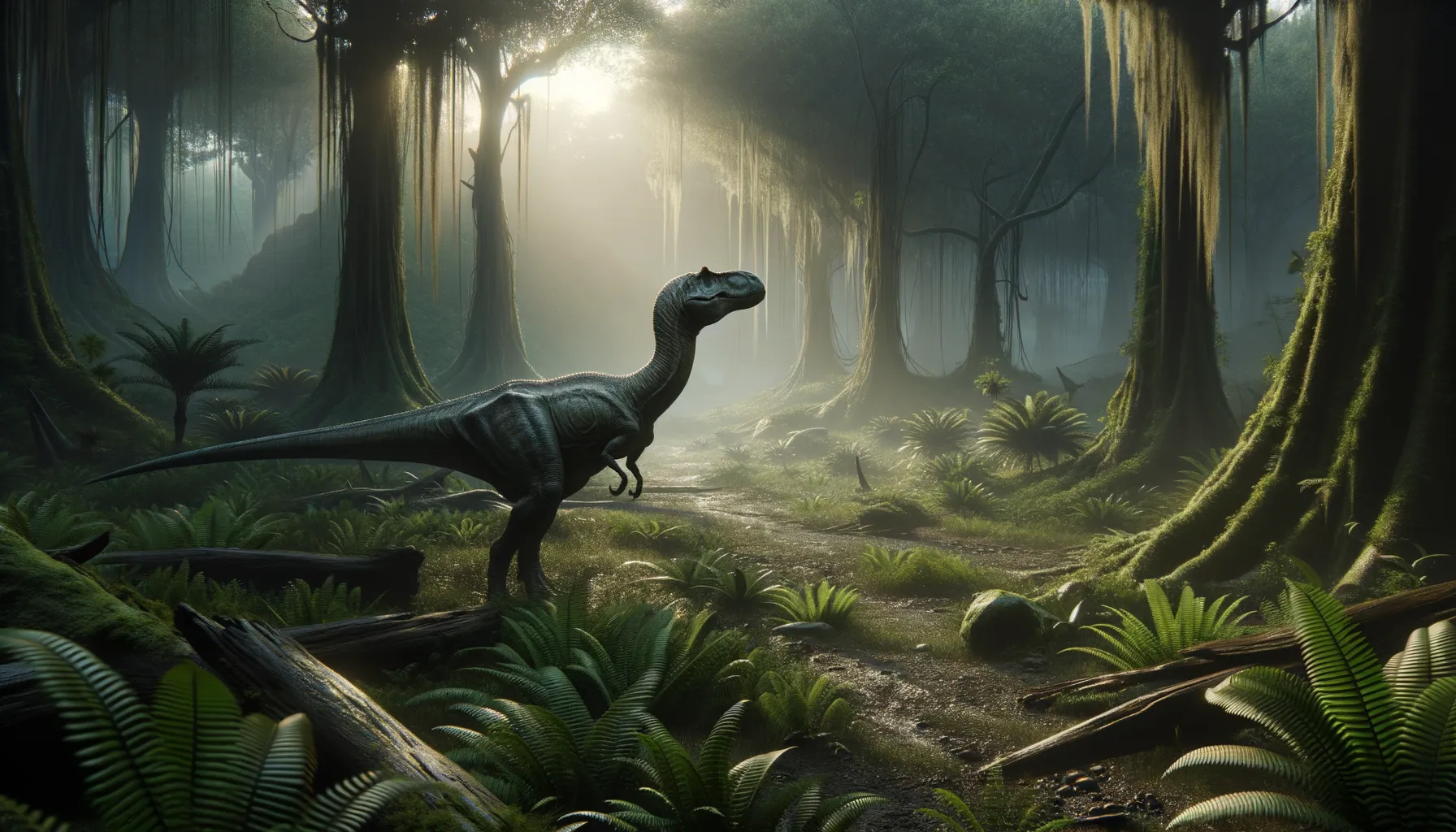
Melanorosaurus
The giant of the Triassic trail.
Period
Triassic
Length
Up to 10 meters in length.
Height
Approximately 3 meters at the shoulder.
Weight
Around 1.3 to 4 metric tons.
Melanorosaurus was an early and large sauropodomorph dinosaur from the Late Triassic period, living around 210-200 million years ago. Known for its formidable size, it was one of the precursors to the giant sauropods, like Brachiosaurus, that would follow in the Jurassic period. Its herbivorous diet primarily included ferns and other low-lying vegetation, supported by its large, sturdy legs and long neck, which helped it reach a diversity of plant life.
Diet
Melanorosaurus was herbivorous, feeding mainly on soft plants, including ferns and cycads. Its long neck allowed it to reach a variety of vegetation, both low and somewhat higher than many of its contemporaries.
Hunting
As a herbivore, it did not hunt other animals. Instead, Melanorosaurus spent much of its time foraging for plants. Its size likely provided some protection against predators.
Environmental challenges
During the Late Triassic, Melanorosaurus faced a changing climate, with periods of aridity affecting plant availability. Competition for resources with other herbivorous dinosaurs would have also been a constant challenge. Predatory threats from carnivorous dinosaurs also necessitated vigilance and likely influenced its evolution towards increased size as a defense mechanism.
Speed
Relatively slow, suited for browsing.
Lifespan
Estimated to be several decades.
First discovery
Discovered in South Africa in the 1920s.
Fun Facts
- Melanorosaurus was among the early giants, living during the Late Triassic period around 227 to 221 million years ago.
- Despite its large size, Melanorosaurus was a herbivore and used its long neck to reach high vegetation.
- The name 'Melanorosaurus' means 'Black Mountain Lizard,' named after the Melanoros region in South Africa where it was first discovered.
- Melanorosaurus walked on all four legs, and some scientists believe it could rear up on its hind legs to reach even higher plants.
- Its fossils were first discovered in the late 1920s, providing insights into the early stages of sauropod evolution.
- Melanorosaurus could grow up to 8 meters in length, making it one of the largest animals of its time.
- The study of Melanorosaurus has helped paleontologists understand the transition from smaller dinosaur ancestors to the giant sauropods.
Growth and Development
Researchers believe that Melanorosaurus experienced rapid growth early in its life to reach a size that would deter predators. It likely grew throughout its life, with a pattern similar to that of other sauropodomorphs. Young Melanorosaurs would have stayed close to adults for protection and learning survival strategies.
Habitat
Melanorosaurus inhabited lush floodplain regions that were rich with vegetation. These areas provided ample food resources, although periodic climate shifts could have led to fluctuations in resource availability. The mosaic landscapes allowed Melanorosaurus to navigate between water sources and grazing grounds effectively.
Interaction with other species
Melanorosaurus likely coexisted with various plant-eating and carnivorous dinosaurs. It may have formed herds to boost protections against localized predators. Interactions with other herbivores would have been mostly competitive for the same food sources, leading to dynamic relationships based on availability and environmental conditions.
Natural lifespan
Melanorosaurus could live for several decades, potentially up to 50 years.
Reproduction
Like many dinosaurs, Melanorosaurus likely laid eggs in nests. The nesting behavior was possibly communal, with multiple individuals laying eggs in the same area. Hatchlings would have been vulnerable, potentially relying on adults for protection from predators during early life stages.
Social behaviour
There is evidence to suggest that Melanorosaurus, like many large herbivores, may have lived in groups, possibly herds, to increase survivability. Such herding behavior would help in deterring predators and in finding food resources more efficiently. These social groups might have also facilitated learning and protective roles for the young.
Fossil locations
The initial fossils of Melanorosaurus were found in South Africa, specifically within sequences in the Stormberg Group of the Karoo Basin. These sites have become significant for understanding early sauropodomorph evolution. Fossils are primarily known from these African deposits, offering a glimpse into their prehistoric range and ecology.
